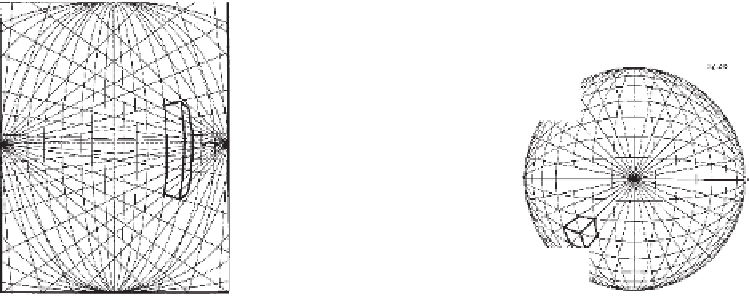Graphics Programs Reference
In-Depth Information
Figure 4.34: Grids and Art for 4 and 5 Vanishing Points (courtesy of Dick Termes).
perspectiveimagessidebysideoroneabovetheother. Theresult,whichDickTermes
terms six-point perspective (no pun intended), is shown in Figure 4.28. Section 4.6.1
discusses an approach to the construction of the five-point grid that is based on the
Postel sphere projection.
Some viewers are impatient with attempts to create panoramic projections on flat
surfaces. Such people may like the solution adopted by Dick Termes, namely to actually
sit inside a sphere and paint a spherical panoramic projection on its surface. The result,
which is naturally termed a
Termesphere
[termespheres 05], is a unique kind of art, but
cannot be included in a topic. (See Figure C.5 for a rough idea.) A side benefit of
this technique is that the finished sphere can easily be converted to two flat disks in
six-point perspective [Keith 01]. The original sphere is made of two thin polyethylene
hemispheres. Once they are painted with acrylic paint, each hemisphere is heated until
the polyethylene melts to become a plastic disk. The painting on the two disks is now
in six-point perspective. An added advantage of this process is that such disks can be
copied to make more disks that can, in turn, be blown into hemispheres by the same
heating process.
My dad's work is like taking your eyeball out of your head, putting it in a building,
and when it spins you can see everything from that one point in space.
—Lang Termes (as a child)
4.9 Other Panoramic Projections
The cylindrical and cubic projections of Sections 4.5 and 4.7 have a common feature that
makes them attractive. The cylinder and the cube can be unrolled or opened into a flat
surface without additional distortions. Other geometric shapes have the same feature,
and this section mentions the most important of them, namely the five Platonic solids
(Figure 4.35) and the cone.







Search WWH ::

Custom Search